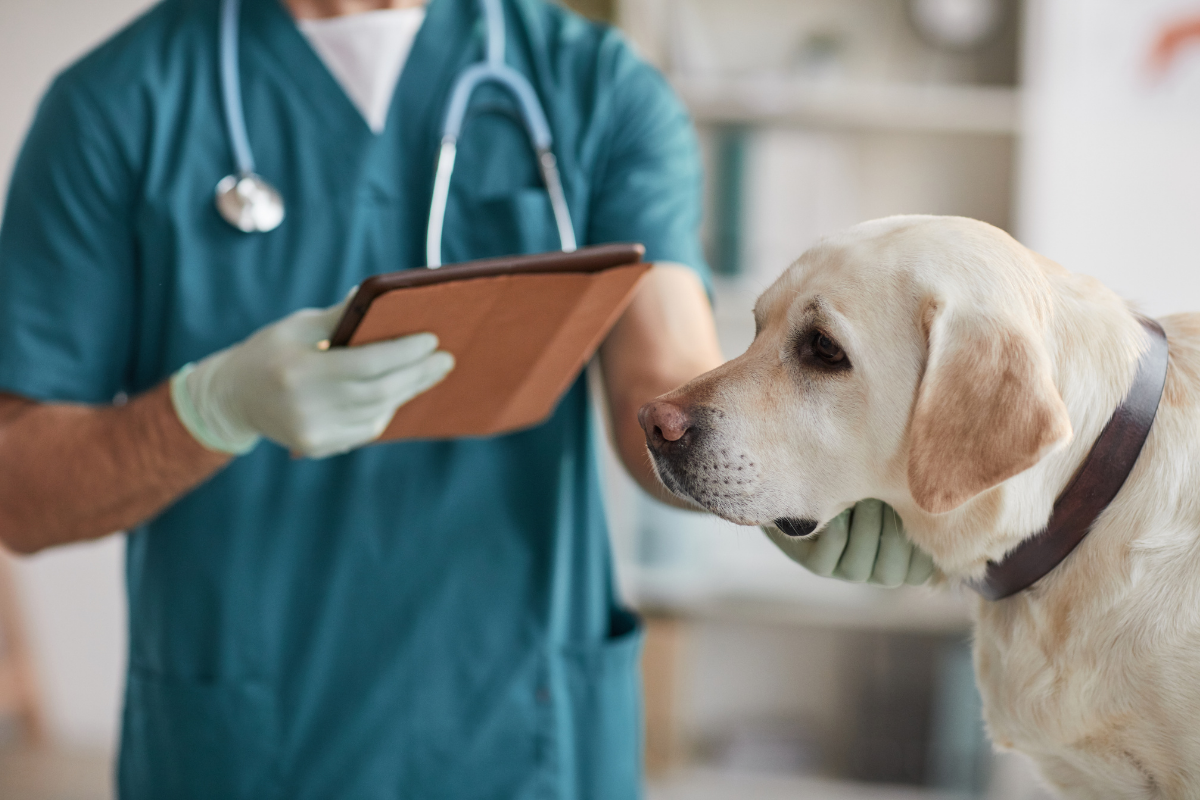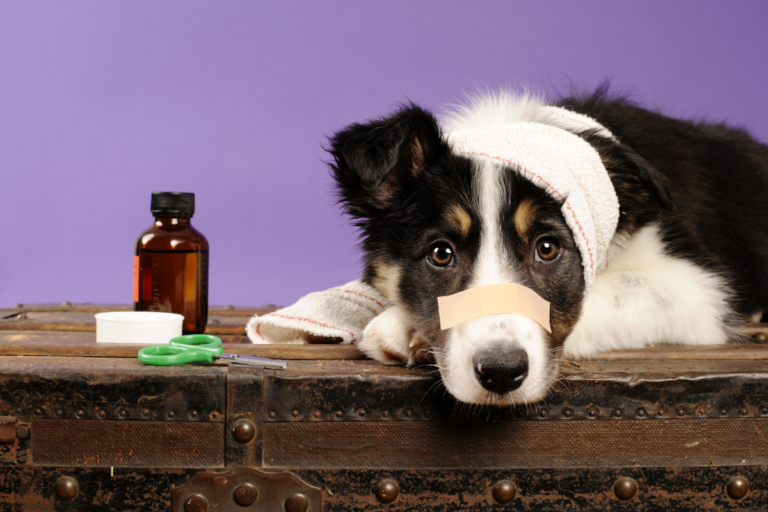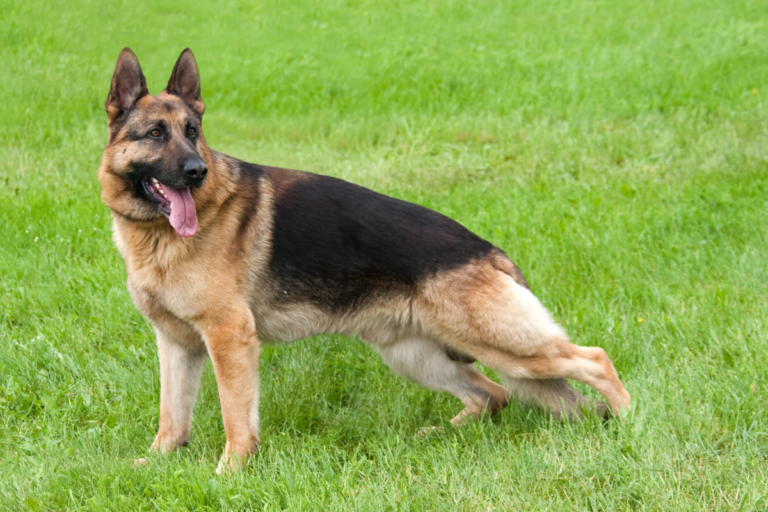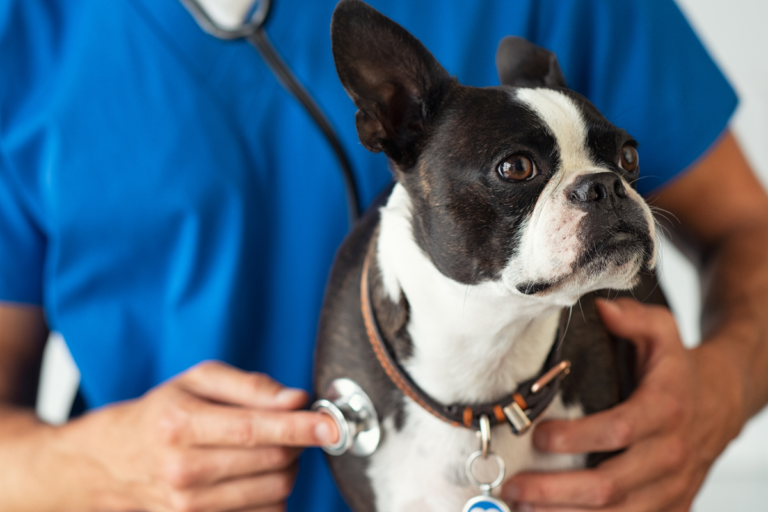Guarding Our Labs: Common Labrador Health Problems and Solutions
Understanding Labrador Health
Common Health Issues
Labrador Retrievers, with their wagging tails and love for a good romp, do have their share of health hiccups. Here’s a look at what could ruffle their fur:
-
Hip Dysplasia: Ever seen a Labrador that’s a bit wobbly on its back legs? This might be the culprit. A bad hip joint can mean pain and trouble moving around. Check out this info on hip dysplasia for more details.
-
Progressive Retinal Atrophy (PRA): This one’s a bit spooky—it messes with their eyesight. You’ll notice cloudy eyes or they might bump into things at night (Purina UK).
-
Hypothyroidism: If your Labrador is packing on the pounds, missing chunks of fur, or just lounging around like a couch potato, it’s worth looking into hypo-whats-a-ma-call-it (Purina UK).
-
Tricuspid Valve Dysplasia: It’s a heart issue from the get-go. Watch out for a cough or if your Lab is huffing and puffing more than usual while trotting down the street.
-
Obesity: These chowhounds love their kibble! But too much can be bad news for their joints and heart (Vetted Pet Health).
Other woes like elbow trouble, allergies, out-of-control scratching, and heart murmurs also sneak up now and then.
Preventive Care Importance
Catching issues before they turn into big problems? Yup, that’s where your vet and some TLC come in. Keep those tails wagging and paws dancing with these tips:
-
Regular Health Screenings: Early catch is easier fix. Get your furball checked for anything from thyroid problems to funky hearts.
-
Weight Mindfulness: Keep an eye on their waistline with good food and a dash of zoomies. Here’s how to keep the fluff in shape: weight management tips.
-
Joint TLC: Every step counts. A sprinkle of glucosamine in their food or a gentle walk can keep those joints from becoming creaky.
-
Chompers Check: Periodontal troubles can lead to big headaches—liver, kidney, you name it (VCA Hospitals).
-
Skin and Ear Care: A quick peep inside their ears or a look-see at their coat can stop little problems from snowballing into bigger ones.
Dive into more on keeping their pearly whites sparkly and those joints limber, ’cause a happy Lab is a healthy Lab.
| Health Issue | Symptoms | Preventive Measure |
|---|---|---|
| Hip Dysplasia | Limping, stiffness | Regular vet check-ups, weight mindfulness |
| Progressive Retinal Atrophy | Cloudy eyes, night blindness | Regular eye exams for breeding pups |
| Hypothyroidism | Weight gain, lethargy | Regular blood checks |
| Tricuspid Valve Dysplasia | Coughing, heavy breathing | Regular heart checks |
| Obesity | Packing extra pounds | Balanced diet, regular playtime |
Discover more on why preventive care is smart for keeping our Labs tickin’ and tockin’ in just the right way.
Addressing Hip Dysplasia
When it comes to Labrador Retrievers, hip dysplasia is a major bummer. This pesky inherited issue messes with the way the hip joint forms, making it all wobbly and giving arthritis an open invitation to move in. The sooner you catch and deal with it, the better your furry buddy will feel.
Symptoms to Watch For
Catching hip dysplasia early can truly up your Labrador’s game in life. Dogs as young as four months can start showing signs, but it can be a sneaky devil that might pop up later. Here’s what to keep an eye out for:
- Trouble Moving: Your Labrador might look like it’s got two left feet when climbing stairs or getting up from a nap.
- Limping: Sometimes one or both back legs get a bit wobbly or slow.
- Ouchies: Your furball might wince, whimper, or sidestep a friendly pat near its hips.
- Stiffness: Think of that creaky feeling after a long snooze—dogs get it, too!
- The Hop Along Gait: If your dog favors one leg, a limp could be the giveaway.
- Energy Dip: A once-playful pup turning into a couch potato might be a red flag.
For a deeper dive into doggie ailments, check out our article on dog diseases and symptoms.
Treatment Options
Handling hip dysplasia means choosing the right fix, depending on how bad it is. Here’s how you can help keep those hips happy:
| Treatment Option | Details | Cost |
|---|---|---|
| Oral Medications | Anti-inflammatories or other meds to keep pain and swelling in check. | $20-$50/month |
| Joint Shots | Steroids or hyaluronic acid sprucing up joint movement. | $50-$200/shot |
| Physical Therapy | Personalized workouts for boosting mobility and muscle strength. | $50-$100/session |
| Surgery | Options like Total Hip Replacement (THR), Femoral Head Osteotomy (FHO), or Triple Pelvic Osteotomy (TPO). | $1,000-$7,000/hip |
Our pals at Orthodog noted that surgical fixes can lessen the hurt and boost your dog’s get-up-and-go. The type of operation will hinge on things like age, size, and just how walloped those hips are.
Non-Surgical Routes:
- Shedding Pounds: Keeping your Lab at a comfy weight is like giving their joints a coffee break. Peek at our tips in weight management for Labradors for more nuggets.
- Supplements Galore: Glucosamine and chondroitin are like a one-two punch for joint health.
- Gentle Exercise: Think swimming—it’s the doggie equivalent of pilates, strength without stress.
Surgical Routes:
- Total Hip Replacement (THR): Swap out old for new—it’s like hitting reboot for pain and movement.
- Femoral Head Ostectomy (FHO): Off with the femoral head, bring on the faux joint, and ease the pain.
- Triple Pelvic Osteotomy (TPO): Snipping and realigning pelvic bones to get those hips on the straight and narrow.
To peep more at these surgeries and what they mean, head over to PetMD.
By staying sharp and stepping up for our Lab’s health, we can help them lead some seriously joyful lives. For more dirt on hip woes in other breeds, have a look at our piece on German Shepherd hip dysplasia.
Dealing with Joint Disorders
Joint trouble is a hot topic with our beloved Labrador Retrievers. Cluing into early symptoms and exploring treatments can really make ’em feel loads better.
Elbow Dysplasia
Elbow dysplasia is a fancy name for a problem that shows up when the elbow joint doesn’t grow the way it should. This can cause limping, pain, swelling in the joint, and a tough time moving around (Purina UK). It’s a smart idea to check the elbows of any breeding dogs to help dodge this issue. Spotting it early and giving the right care can change a lab’s life.
Symptoms to Watch For:
- Limping in the front legs
- Whining or acting hurt when you touch the elbow
- Puffy, swollen elbow
- Stiff, limited movement
- Hesitation to run or play
Treatment Options:
- Medicines: Painkillers and anti-inflammatories help ease pain and swelling.
- Surgery: Sometimes, a doc has to go in and clean things up if it gets bad.
- Physical Jams: Routine exercises and therapy to boost movement and build some muscle around the joint.
Arthritis Management
Arthritis sneaks into those joints, producing stiffness, limping, and all sorts of aches. Helping labs beat arthritis requires medicine, workouts, and eating the right stuff.
Symptoms of Arthritis:
- Gets super stiff after naps
- Not so eager to move or run
- Limping on one or many legs
- Joints may look puffy
- Mood shifts, maybe snappy ’cause it hurts
Management Strategies:
| Treatment Option | Benefits | Considerations |
|---|---|---|
| Pills | Eases pain and swelling | Gotta check in with the vet often |
| Weight Watch | Less stress on achy joints | Keep an eye on chow and movement |
| Therapy Sessions | Keeps joints movin’ groovy | Needs a pro to guide the way |
| Add-Ons | Boosts joint mojo (think glucosamine) | Vet’s nod needed for doses |
| Food Swaps | Total body wellness boost | Pick foods nice to the joints |
Figures courtesy Purina UK
Preventive Measures:
- Vet Check-Ups: To tweak and improve treatment as needed.
- Joint Boosters: Slip in glucosamine and chondroitin.
- Soothing Rubs: Ramps up blood flow, cuts down stiffness.
- Stretch and Play: Keeps muscles strong and joints loose without overdoing it.
Keeping an eye on dog dental health and having regular check-ups can catch joint problems early. Plus, have a peek at our tips on symptoms of ticks in dogs since those pests can mess with a pooch’s health.
For a deeper look at surgery and how to help pups with joint issues, see our piece on canine disease. Curious about joint health in other breeds? Check out our guide on German Shepherd hip dysplasia. Let’s make sure our labs keep movin’ with ease and joy!
Managing Endocrine Disorders
When it comes to health hiccups in Labradors, endocrine disorders are not something you want snoozing on. Hypothyroidism, one of those pesky hormone imbalances, is common in our four-legged pals. Let’s dive into what makes it tick and how we can keep tails wagging.
Hypothyroidism Risks
Our loveable Labradors can be magnets for hypothyroidism— that’s when the thyroid gland takes a nap and doesn’t churn out enough hormones (Purina UK). While it might sound like a science class, the effects are all too real and can cause quite the health rollercoaster.
Things to watch out for:
- Weight gain: Imagine all the treats but none of the fun—extra pounds sneak up out of nowhere.
- Hair loss: Bald spots playing hide and seek, especially on their sides and tails.
- Lethargy: Suddenly turning into couch potatoes and losing that spring in their step.
- Cold intolerance: Seeking out warmth like a human with the flu.
Stay ahead with regular vet visits and some blood work to catch hypothyroidism before it plays spoiler.
Symptoms and Monitoring
Spotting hypothyroidism early on is like finding a needle in a haystack, but it makes all the difference. Keep your eyes peeled for these tell-tale signs:
| Symptom | Description |
|---|---|
| Weight gain | Unexpected pounds without splurging on extra kibbles |
| Hair loss | Pattern baldness running wild |
| Lethargy | Avoiding fetch and walks at all costs |
| Intolerance to cold | Preferring the sunniest spot in the house |
| Skin issues | Flaky, itchy skin or troublesome infections |
| Behavioral changes | Playing Dr. Jekyll and Mr. Hyde—more aggression or shyness |
As soon as hypothyroidism is on the radar, keeping a close watch and crafting a game plan is a must.
- Regular Vet Visits: Pencil in those check-ups to keep tabs on thyroid levels.
- Medication: Thyroid hormone remedies can work wonders—just follow the vet’s advice like a recipe.
- Diet and Exercise: Stick to a balanced menu and ensure they’re feeling the burn. Healthy pups are happy pups (VCA Hospitals).
If you’re hungry for more Labrador health nuggets, swing by our handy guide on dog diseases and symptoms.
Being clued up on these health hiccups means a much happier and healthier life for our Labradors. Tick all the boxes with regular check-ups, proper chow, and clocking in enough vet visits. Browse through our goodies on canine disease, dog gum disease, and most healthy dog breeds for even more tidbits.
Eye Health and Junk in Your Genes
Progressive Retinal Atrophy
Progressive Retinal Atrophy (PRA) is right up there when we’re talking about Labrador health problems. This sneaky little thing causes the eye’s retina to go kaput, leading to blindness over time. Big boys like Labradors aren’t strangers to PRA and other related eye hiccups (Purina UK).
Keep your peepers peeled for:
- Cloudy peepers
- Weird behavior, like hesitation in the dark
- Night blindness – spookier than a ghost story
Quick trips to the vet are a must. Catch this villain early! Some breeders get all Sherlock Holmes on their breeding dogs with genetic tests to sniff out PRA carriers. Smart breeding can squash the chances of this nastiness in future Labrador squads.
Quick Defensive Moves
No magic cure exists for Progressive Retinal Atrophy, but there are clever ways we can tackle it head-on and maybe slow it down for our Lab pals.
-
Eye Check-ups: The doc’s got to check those peepers! This is twice as important for dogs making puppies so they don’t pass on the problem to the little fluffy ones.
-
DNA Drama: Make sure both doggy parents get the PRA test. It’s a solid way to nearly keep this stick not-in-the-mud. Good breeders have papers proving their pups are in tip-top shape.
-
Yummy Noms: Feed your pupper the good stuff. A diet rich in eye-loving nutrients can keep their eyes sharp. Check with your vet or peek at our Labrador weight management tips for more munchie advice.
-
Fun House Adventures: Helping our doggos adapt to tricky vision with safe play zones and using touchy-feely or sound cues will boost their confidence and happiness.
Getting ahead of the game helps beat PRA and other eye gremlins. Staying on top of check-ups and knowing what’s what for dog health keeps our four-legged friends grinning and wagging.
Fancy further reading on puppy health? Go sniff around our piece on common joint hiccups with German Shepherd joint stuff, or get savvy with weight tips in our weight management guide. Poke around for other health gossip related to French Bulldogs and Beagles, too!
Weight Management for Labradors
Obesity Risks
Our lovable Labradors, known for their welcoming wag and upbeat vibe, can tip the scales easily, and not in a good way. Carrying extra pounds poses big problems like joint aches, a grumpy heart, and even diabetes. (Vetted Pet Health). Yep, those extra treats can add up to some serious roadblocks for Fido.
| Health Issue | Commonly Affected Areas |
|---|---|
| Joint Disease | Hips, Elbows |
| Heart Disease | Heart |
| Diabetes | Whole Body |
Labradors often wrestle with joint woes like hip and elbow dysplasia. Adding more cushion to their bones just ramps up the ouch factor and limits their bounce (PetMD). Plus, being chunky can put undue stress on the ticker and other crucial parts, shaving years off your Lab’s life.
Healthy Diet and Exercise
Keeping our Labs in tip-top shape means a diet plan that doesn’t double as a calorie warehouse and regular burn-the-calories exercise sessions. Balanced meals help make sure they get all their nutrients without the unneeded stuff. A few tricks to keep your furball’s diet and workouts on point:
Dietary Tips:
- Portion Control: Portion is the potion. Measure that kibble rightly.
- High-Quality Food: Go for dog chow packed with real meat, not the fluffy filler junk.
- Regular Feeding Times: Stick to a meal clock.
- Healthy Treats: Swap out cookie-cutter treats for low-calorie, nutrient-rich nibbles.
Exercise Tips:
- Daily Walks: Shoot for a daily 30-minute jaunt.
- Playtime: Break out the toys—fetch or tug-of-war.
- Swimming: Dive into water workouts – a Lab’s delight and easy on the joints.
- Interactive Toys: Use gadgets that keep both the mind and body in gear.
Example Diet Plan for an Adult Labrador:
| Meal Component | Amount per Day |
|---|---|
| High-Quality Dog Food | 2-3 cups |
| Fresh Vegetables | 1/2 cup |
| Healthy Treats | As needed |
Curious about more tips on keeping your pup in fighting fit shape? Check out our piece on overweight dogs.
By sticking to these strategies, we’re giving our Labs the best shot at living spry and joyful lives. Regular check-ins at the vet make sure we’re on the right track, keeping tabs on their weight and general wellness. For more insights on dietary needs and health issues in other breeds, pore over our treasure trove of resources.






